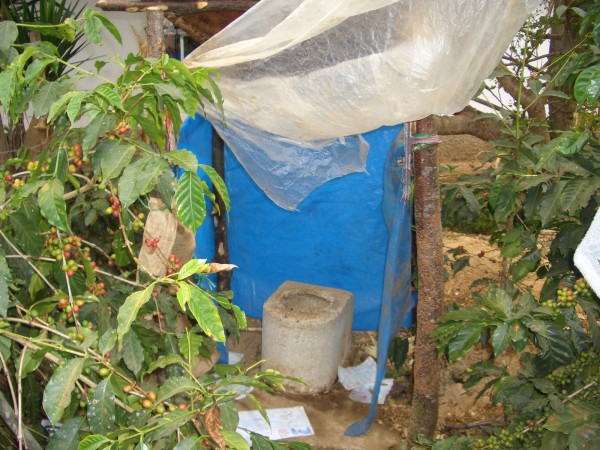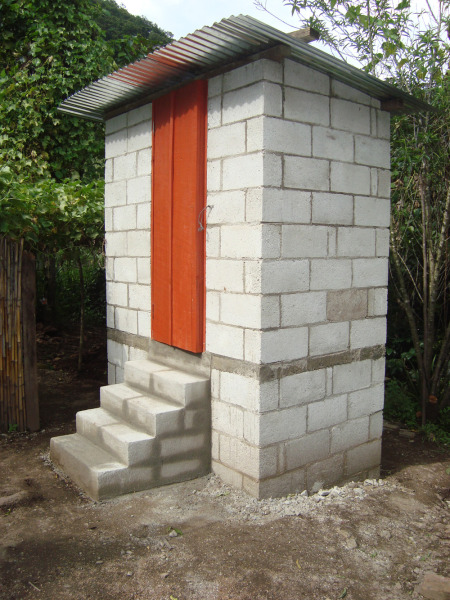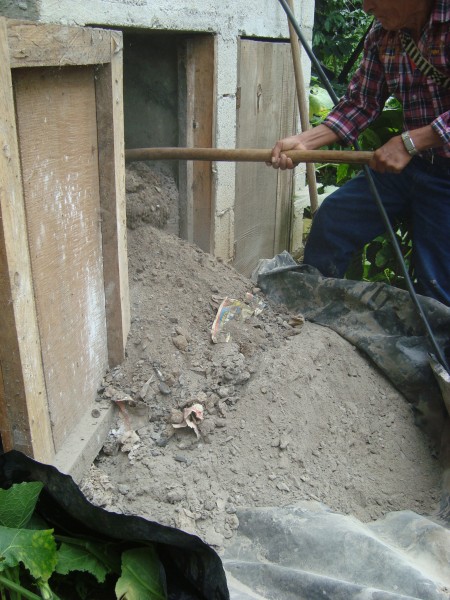Composting Latrines
This open pit latrine contaminates ground water, has a bad odor, draws flies, and has no privacy. Studies show the cause of many diseases is the condition of our lavatories and bad hygiene habits.
Human feces is a major pathway for micobial pathogens which cause diarrhea and other diseases which are a major cause of death, particularly of infants. The pathogens are able to survive in the feces when it is kept near body temperature, but even in circumstances where the feces is dried out completely, they may still pose a danger.
The composting process aims to encourage a situation whereby the pathogens are destroyed by competition from other ‘healthy’ soil micobes. This environment is created by adding carbon-rich material, reducing moisture levels and increasing oxygen by aeration.
A composting toilet is therefore a low technology method to encourage the best possible conditions to destroy the pathogens and usually involves adding available carbon-rich materials after defecation – usually ash or sawdust. There are often modifications to standard pit latrines to make them smaller, more watertight and better aerated (see below). This means that a composting toilet is usually emptied more regularly than a pit latrine might have been.
In many, but not all, systems the urine is separated from the feces as the urine is much less likely to be a source of infection and can be used more easily as a direct form of fertiliser. The composting process is usually considered to be more efficient when the feces is drier and the risk of leakage is reduced.
A composting latrine is a sanitary alternative with many benefits:
- It does not use water.
- It is not costly to construct or to use.
- It does not occupy much space.
- It can be installed inside or outside.
- With good handling, it doesn’t produce disagreeable odors.
- It produces an organic fertilizer that has a minimal probability of pathogenic organisms (organisms that produce illnesses).
- It produces a constant supply of liquid fertilizer. Urine + Water + Time = Urea
During our initial conversations with communities, we emphasize the importance of understanding exactly how their waste will become fertilizer. It’s a difficult topic to discuss and not easily understood by people who commonly defecate in a nearby corn field. Seeing is believing so we arrange for families to visit other communities using composting latrines to see a latrine, ask questions, and learn from families already using the latrine. Old habits don’t die easily so some people are reluctant to use the latrine. Once understood, families are eager to build a composting latrines.
One side of the latrine is used for 6 months. It’s imperative they spread ashes or dry materials after each use. After 6 months the hole is covered and the base is moved to the other side. The waste “cooks” for 6 months before it is removed and used as fertilizer.
Besides providing privacy and doesn’t use water, the latrine can be built close to water sources, and when families own a small plot of land, the latrine can be built close to the house. Users report they see a remarkable difference in crop performance. It is economically beneficial because families do not need to buy expensive fertilizers.



